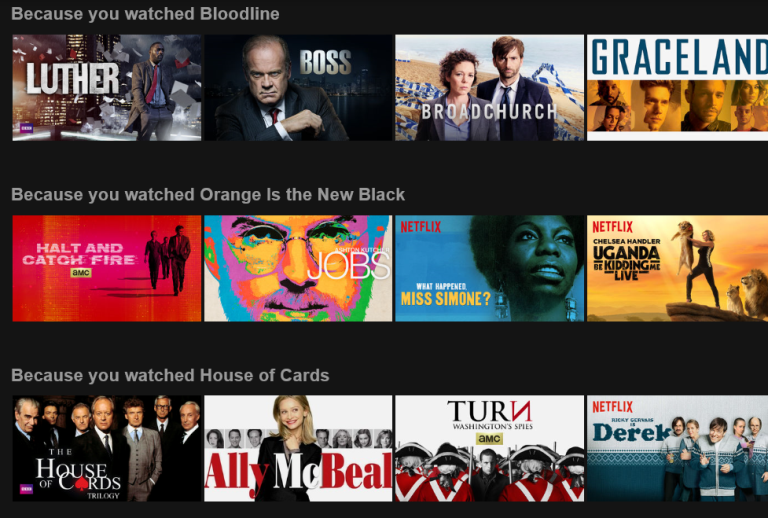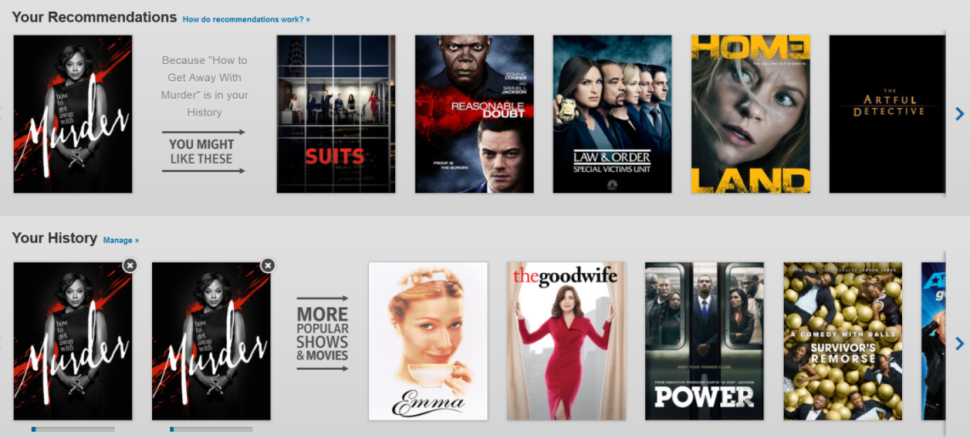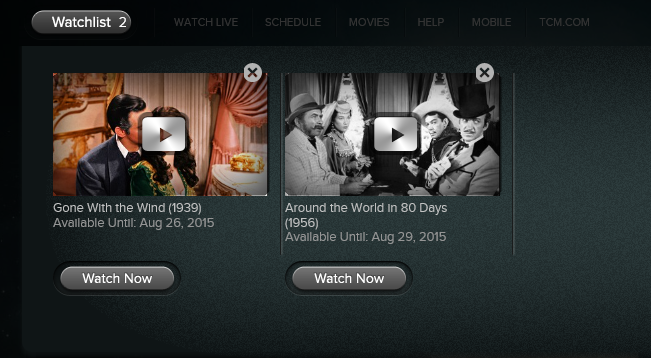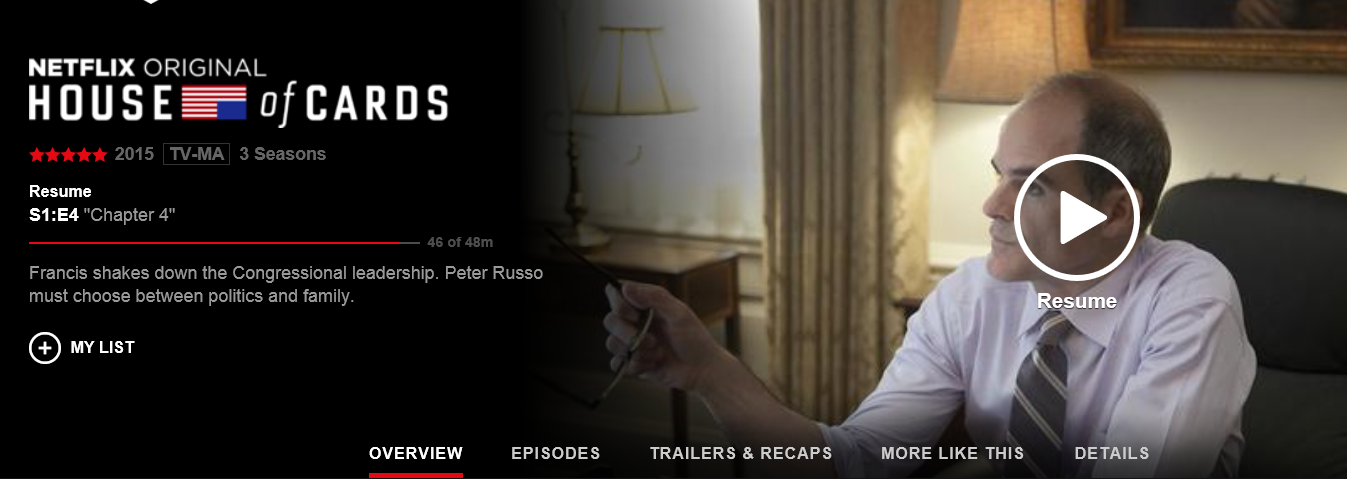 Personalization
PersonalizationIn scenarios where the user is signed in and the site/app owner is hosting the content and aware of which content is being played, personalization, including recommendations, enhances the experience of the viewer.
Best practices for personalization
Identification of the viewer is valuable to the personalization of the viewing experience, since a majority of households have multiple viewers who are likely to have different interests.
• Allow viewers to establish individual profiles, based upon content genres
• Reassure viewers of the specific purpose of personal data for this use, and that it will not be shared
• Explain to subscribers the benefits of personalization features to encourage them to establish profiles
• Request confirmation of viewing party in a simple way at the start of each session, as Netflix does with the “Who is Watching?” screen
• Capitalize on opportunities to learn and confirm information, e.g., which devices are frequently/exclusively employed by which user profiles
• Allow viewers to create play lists of what to watch later and use history to identify past viewing and favorites.
• Present viewers’ history, simplifying return to assets of interest such as series
Best practices for recommendations
Where user identification exists, present viewing recommendations based on personal or historic viewing patterns
• Metadata allows distributors to create recommendations for content to view, based upon personal viewing patterns and habits (“Because you watched X, you might also enjoy Y”), highlighting unviewed programming with metadata similarities.
• Within each independent entity, aggregated viewing data across households may be combined with metadata to create recommendations for content to view, based on general viewing patterns and habits (“Viewers who watched X also watched Y”).
o NOTE: Programming agreements may prohibit cross-network recommendations
• Allowing rating of content by viewer to strengthen content recommendations
• Employ a reminder functionality that alerts the viewer to an upcoming episode or a sequel.
Personalization/Recommendation examples:
Netflix

Xfinity

Bookmarking content to watch later
Bookmarking is an easy way to save shows, movies and events in order to watch them at a later time or date – or to watch them on another device within your home. In addition to the Watch Now option, book marking functions include Watch Later/Add to Watch List, Watch Offline, etc. Additional sophistication can also be employed, such as Alert Me When Next Episode is Available.
Many content providers have “Watch Lists” that allow the consumer to save a show, movie, event in a folder in order to watch it later. Example below from Turner Classic Movies.

Bookmarking content to pause/return to viewing point
Although service providers’ systems may function differently, one implicit premise of bookmarking is universal: When the consumer pauses a program on one device in the home, the program is then bookmarked at that point and available for consumption from that same point on other devices in the home on the same provider portal. Example below from Netflix.

Best practices for bookmarking
• Allow user to pause on one device and resume viewing on another
• Provide a progress bar indicating time remaining
• Leverage viewer profiles that allow viewer to create play lists or watch later folders